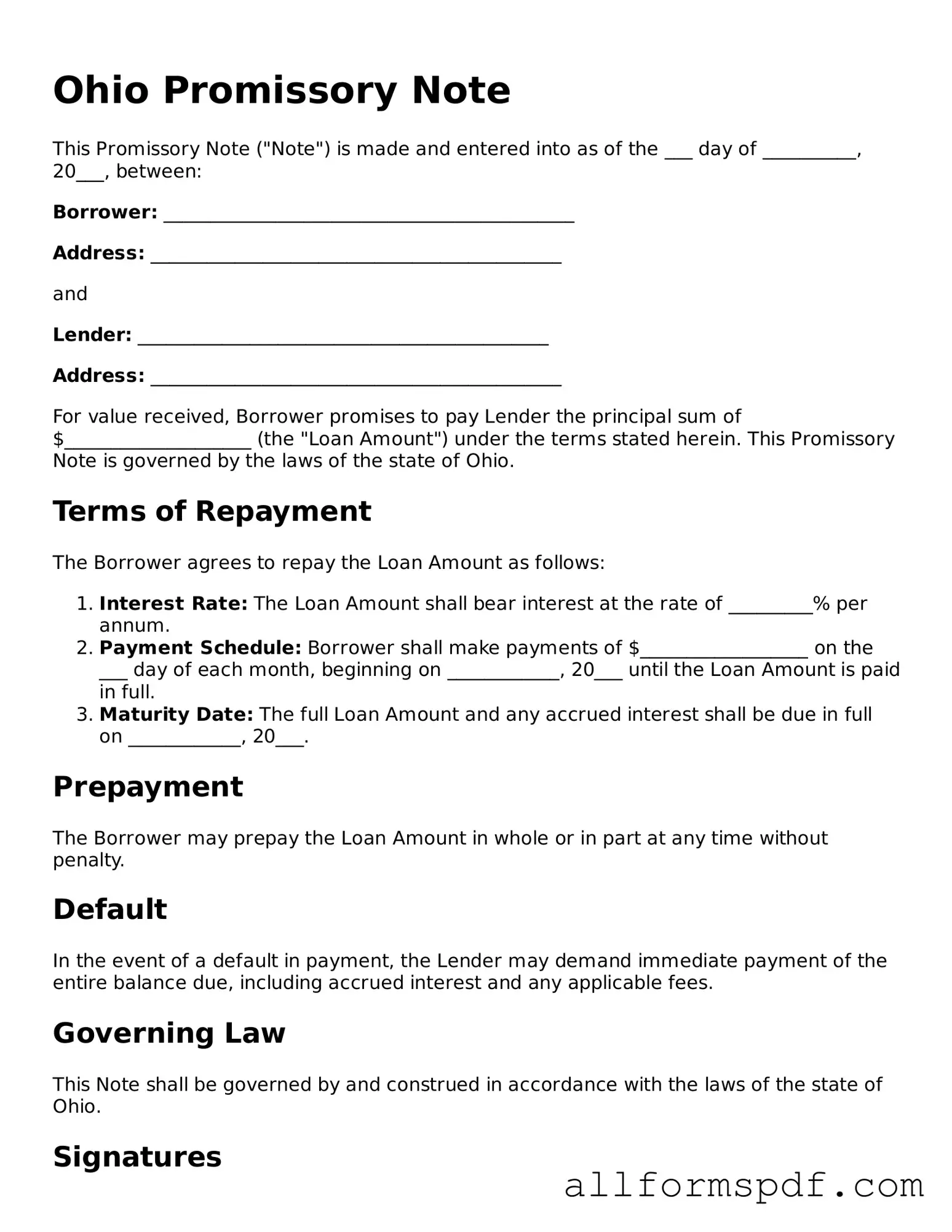Filling out the Ohio Promissory Note form can seem straightforward, but many individuals encounter common pitfalls that can lead to complications down the line. One frequent mistake is not including the correct names of the parties involved. It is essential to ensure that both the borrower and lender are accurately identified. Any discrepancies can create confusion and potentially invalidate the note.
Another common error is failing to specify the loan amount clearly. Writing the amount in both numerical and written form is crucial. If a borrower writes “$5,000” but spells it out as “five thousand dollars,” and there is a discrepancy, it could lead to disputes. Clarity in this area is vital to avoid misunderstandings.
Dates are another area where mistakes often occur. People sometimes forget to include the date the note is signed or the date when payments are due. This omission can lead to confusion regarding the timeline of the loan, affecting both parties’ expectations and obligations.
Many individuals also overlook the importance of detailing the interest rate. Whether the loan is interest-free or carries a specific rate, this information must be clearly stated. A vague or missing interest rate can lead to misinterpretations about the cost of the loan over time.
Payment terms should be clearly outlined, yet they often are not. Some people write vague terms, such as “monthly payments” without specifying the amount or the duration. Clear, detailed payment instructions help prevent misunderstandings and ensure that both parties are on the same page.
Another mistake is neglecting to include a late fee clause. If a borrower fails to make a payment on time, having a specified late fee can provide clarity and protect the lender's interests. Without this clause, there may be confusion about the consequences of late payments.
Signatures are critical, yet some individuals forget to sign the document altogether. Both the borrower and lender must sign the note for it to be legally binding. Additionally, not having witnesses or a notary when required can also render the document ineffective.
People often fail to keep a copy of the signed Promissory Note. This oversight can create difficulties if disputes arise later. Keeping a record ensures that both parties have access to the same information and can refer back to the original agreement.
Lastly, individuals may not seek legal advice before finalizing the note. While it may seem unnecessary, consulting with a legal professional can help identify potential issues and ensure that the document meets all necessary legal requirements. This step can save both parties time and money in the long run.
